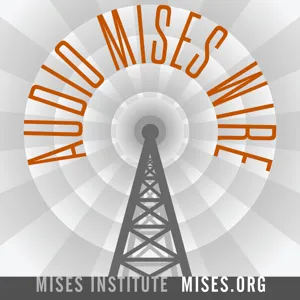Podcast Summary
Jobs market reliability: Despite a robust headline jobs report, concerning trends in part-time jobs, inflation-adjusted wages, and historical data reliability indicate a less optimistic jobs market situation
While the U.S. economy added 216,000 jobs in December as per the Bureau of Labor Statistics report, the jobs market situation is not as rosy as it seems on the surface. The media consensus portrays the jobs economy as robust, but a closer look at indicators such as part-time jobs, inflation-adjusted wages, and historical reliability of government data reveals concerning trends. The government's employment numbers have become less reliable in recent times, with frequent discrepancies between reported and later revised data. Therefore, it's essential to dig deeper beyond the headline numbers to gain a clearer understanding of the employment situation.
Government job growth reporting: The federal government's initial job numbers have been frequently revised downward, leading to concerns about potential misinformation to financial markets, the Federal Reserve, and lawmakers
The reliability of initial job numbers reported by the federal government has been called into question due to frequent revisions that show significantly lower employment growth than initially stated. From 2023, the government overestimated job growth in nine out of ten months, with an average reduction of 55,000 jobs per month. For instance, the initial estimate of 209,000 new jobs created in June 2023 was later revised down to 105,000. These revisions have led to concerns about potential misinformation to Wall Street, the Federal Reserve, and Washington lawmakers. While private research firms and economists help maintain some level of plausibility, the negative job trend data still dominates the reports. Despite a respectable increase of 212,000 positions reported for December, it's concerning that the government's commitment to inflating numbers remains evident.
Employment trend: Despite a stable unemployment rate, the number of employed people decreased significantly in December due to a large number of people leaving the workforce, leading to a smaller total workforce.
Despite a solidly good unemployment rate of 3.7%, the number of employed people decreased significantly in December as measured by the Household Survey. This decrease was due to a large number of people leaving the workforce, leading to a smaller total workforce. The unemployment rate remained steady because it's calculated as a percentage of the total workforce that is employed. The decline in the employment population ratio for prime-aged workers further highlights the trend of people leaving the workforce. This means the economy can continue to lose jobs without an increase in the unemployment rate. However, it's important to note that part-time work has replaced full-time positions in some cases. The month-over-month decrease in employed persons in December was the worst since the COVID recession, with 683,000 fewer people employed than in January. This disappointing employment trend, despite a stable unemployment rate, should be closely monitored.
Job market weaknesses: Despite an increase in employed individuals, the job market is experiencing significant declines in full-time jobs, stagnant real wages, and an increase in mass layoffs
The job market is experiencing a mixed picture. While the number of employed individuals increased, the number of full-time jobs decreased significantly, marking the worst decline since the COVID-19 recession. Real wages have also been stagnant, with only a modest increase over the past four years when accounting for inflation. Despite these challenges, most people still have jobs, but mass layoffs are becoming more common. Overall, the job market is not as strong or robust as often portrayed in the media, and there are concerns about the long-term impact on wages and employment.
Zombie companies, financial conditions: Despite interest rate hikes, zombie companies and loose financial conditions keep the job market afloat, masking potential economic instability
Despite the Federal Reserve raising interest rates significantly for the first time in over a decade, the economy has not yet experienced the job losses that some might expect based on historical economic theories. The reason for this is that there is still a significant amount of money from previous periods of monetary inflation that is propping up "zombie companies." Additionally, financial conditions have not tightened as much as assumed, and banks are still receiving backdoor bailouts, allowing them to continue pumping liquidity. The job market is still hanging on, but the situation may not be as robust as the headline numbers and media pundits suggest. This is due to the lingering effects of immense money inflation. For further insights, visit Mises.org.

